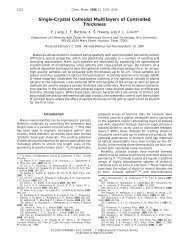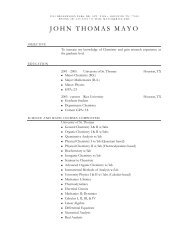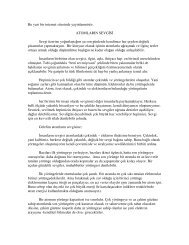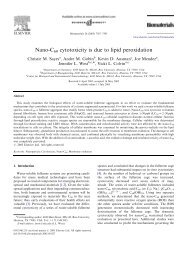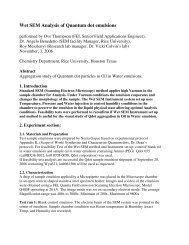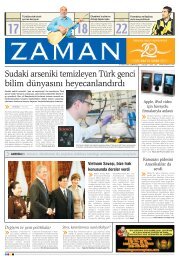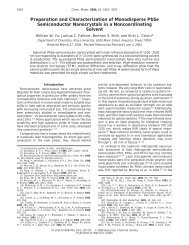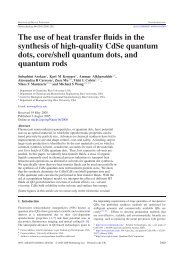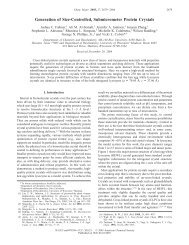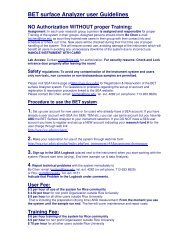Magnetic Separation: Industrial and Lab Scale Applications
Magnetic Separation: Industrial and Lab Scale Applications
Magnetic Separation: Industrial and Lab Scale Applications
You also want an ePaper? Increase the reach of your titles
YUMPU automatically turns print PDFs into web optimized ePapers that Google loves.
Figure 3. Kaolin decolorizes to white after magnetic separation . Courtesy of<br />
R.Weller/Cochise College <strong>and</strong> U.S. Geological Survey.<br />
b. Steel production<br />
Conventional methods for cleaning steel mill waste <strong>and</strong> process waters include<br />
sedimentation, flocculation followed by sedimentation, <strong>and</strong> fixed bed filtration.<br />
Sedimentation methods require large areas for settling tanks <strong>and</strong> clarifiers (Oberteuffer<br />
1975). Table 2 lists some of the contaminants generated in a steel production process. On<br />
average 1 ton of steel needs 151 tons of water for cooling, cleaning purposes. Apparently,<br />
the process generates many magnetic particulates. Those particles, especially the ones in<br />
the gas <strong>and</strong> hot water streams, need vast space <strong>and</strong> heavy machinery for removal by<br />
regular methods, filtration, flocculation, etc. <strong>Magnetic</strong> separation, instead, offers great<br />
time, space <strong>and</strong> cost savings (Oberteuffer 1975, Harl<strong>and</strong> 1976, Gerber 1983 p133). In a<br />
sample treatment at Kawasaki Steel Corporation of Japan, a 3 kOe field strength, 2.1 m



